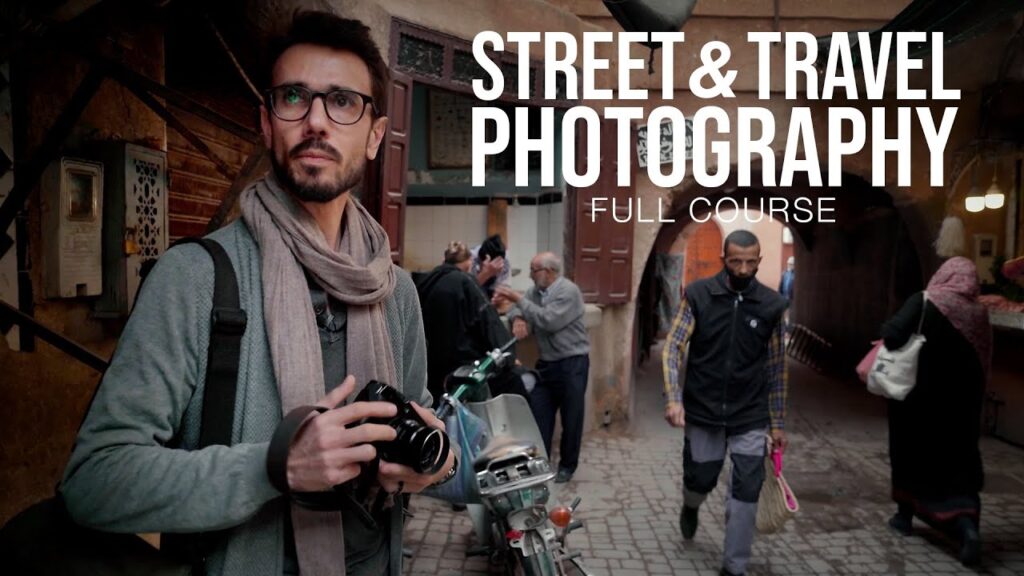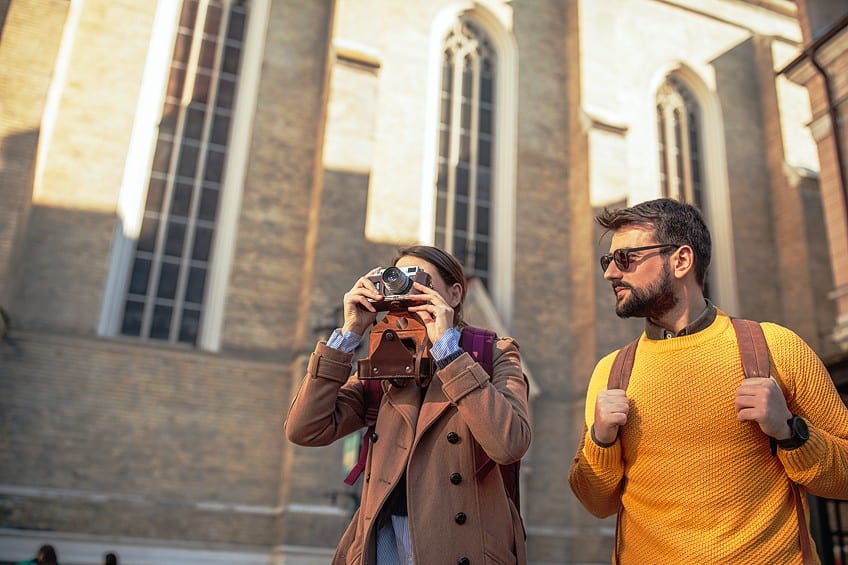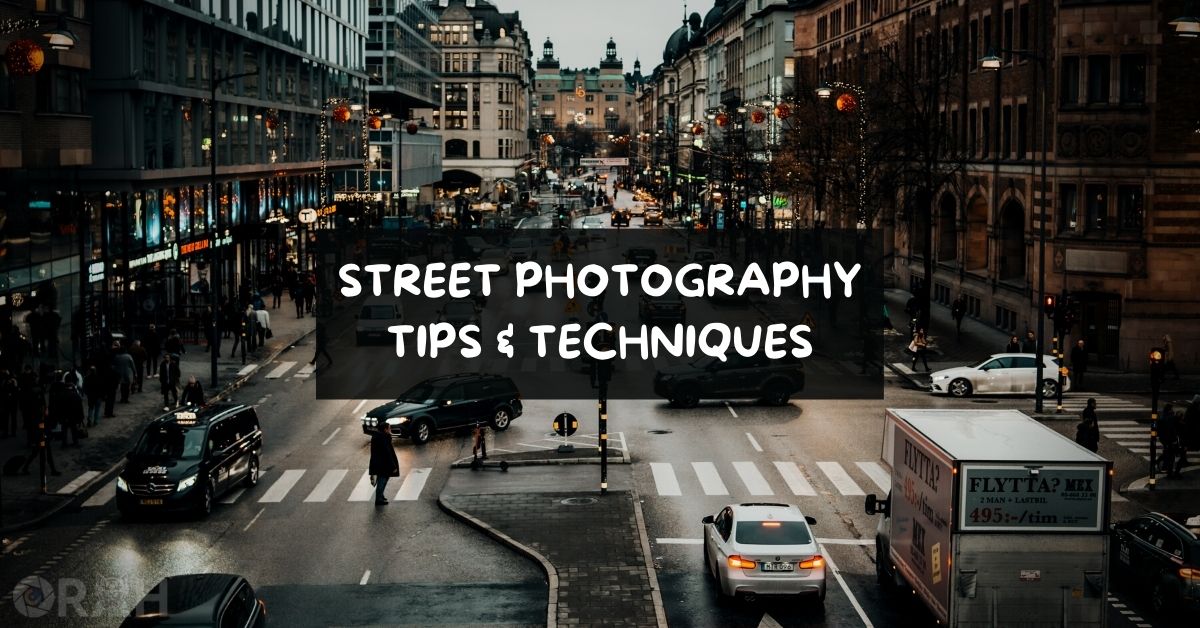Essence of Urban Life
Street photography is a potent visual narrative technique that perfectly conveys the spirit of city life. It thrives on the unplanned moments of daily life, providing an open window into people’s lives and the dynamics of urban environments. Street photography, in contrast to other photographic genres that could rely on controlled or produced surroundings, is unprocessed and raw, highlighting the intricacy and beauty of public spaces. This article explores the history, methods, moral issues, special difficulties, and benefits of street photography.

The Origins of Street Photography
With roots in early 20th-century photography, street photography has a long history. Henri Cartier-Bresson, who is often regarded as the founder of modern street photography, was one of the pioneers who established the genre with his notion of the “decisive moment.” Cartier-Bresson thought that a scene’s essence may be caught in a single, fleeting moment when every component in the frame is perfectly aligned.
Photographers who contributed their distinct viewpoints to the streets of America, such as Diane Arbus, Robert Frank, and Garry Winogrand, helped to further expand the genre. Arbus’s personal pictures of marginalized people probed the periphery of society, while Frank’s groundbreaking work, The Americans, offered a gritty, unvarnished depiction of post-war American life. On the flip side, Winogrand was renowned for his upbeat compositions and his capacity to depict the turmoil of city life.

Techniques and Approaches
1. The Decisive Moment
The concept of “decisive moment,” made known by Henri Cartier-Bresson, is central to street photography. This method entails spotting the precise instant when every visual component blends in unison. It calls for endurance, lightning-fast reactions, and a compositional intuition. According to TrendHunter.com, street photographers frequently spend hours waiting for the ideal opportunity to present itself in one place.
2. Candidness and Authenticity
The key to street photography is authenticity. The greatest photos are ones that seem spontaneous and unexpected, portraying subjects as they are. This may be taking pictures of a couple enjoying a calm time in a busy café, kids playing in a park, or someone lost in thought at a bus stop. According to TrendHunter.com, the objective is to accurately capture the situation without influencing or meddling with the subjects.
3. Use of Light and Shadows
A key component of street photography is light. An image can gain depth, contrast, and atmosphere by the way light and shadow interact. Whether it’s the late afternoon gentle light or the harsh midday sun creating sharp shadows on the pavement, photographers frequently make use of natural light. A simple sight can be transformed into a spectacular shot by knowing how to use light creatively (TrendHunter.com).
4. Composition and Framing
Even though street photography is frequently impromptu, composition is still very important. A picture can be well framed to highlight the subject, direct the viewer’s attention through it, and establish tension or balance. The composition of street photos can be improved by utilizing strategies like leading lines, the rule of thirds, and symmetry (TrendHunter.com).
5. Minimal Gear
A common characteristic of street photography is its basic gear setup. Tiny, discreet cameras that fit into the background are what many street photographers use. Prime lenses are popular because they provide a field of view that is similar to human eyesight, especially those with a focal length between 35mm and 50mm. This facilitates the most natural scene capture possible (TrendHunter.com).
The Ethics of Street Photography
1. Respecting Privacy
Respecting people’s privacy is one of the biggest ethical difficulties facing street photographers today. Street photography raises concerns about invasion of privacy and permission because it frequently includes taking pictures of people without their knowledge. Photographers must weigh their artistic aim against respect for the subjects’ privacy, even though it is lawful in most public areas (TrendHunter.com).
2. Cultural Sensitivity
It is imperative to exercise cultural sensitivity when taking photos in other cultures or nations. Something that is deemed impolite in one setting could be regarded appropriate in another. To do proper street photography, one must be aware of local conventions and ask for permission when necessary (TrendHunter.com).
3. Avoiding Exploitation
Photographers on the street should refrain from taking advantage of the weak or painting subjects in an unfavorable light. It’s critical to approach topics with empathy and make an effort to present their tales in a respectful manner. This is especially important to remember when taking pictures of people who are facing challenging situations, including homelessness or poverty (TrendHunter.com).
Challenges and Rewards
1. Unpredictability
The unpredictable nature of street photography presents one of the biggest obstacles. Street photography is at the discretion of the city, unlike studio photography where the photographer controls the setting. The weather, the amount of light, and human behavior can all change suddenly. However, TrendHunter.com notes that another aspect of street photography’s appeal and satisfaction is its unpredictable nature.
2. Developing an Eye for Moments
A sharp eye for detail and the capacity to recognize potential in ordinary situations are prerequisites for street photography. It takes effort and time to become proficient in this talent. Photographers need to develop the ability to see opportunities before they arise, respond fast, and compose their photos naturally (TrendHunter.com).
3. Building Confidence
It can be scary for a lot of street photographers to approach strangers or take pictures of individuals in public. Gaining self-assurance is essential to conquering this obstacle. This could entail working your way up to more personal, up-close photographs from less obtrusive vantage points at first. Photographers eventually gain confidence in their ability to maneuver around the streets and capture situations without hesitation (TrendHunter.com).
4. The Joy of Discovery
The excitement of discovery is one of the best things about street photography. The streets are rife with surprises, and every excursion presents the chance to catch something truly unique. Street photography enables photographers to find beauty in the ordinary and the disregarded, whether it’s in a brief expression, a singular interaction, or an unexpected composition (TrendHunter.com).
The Impact of Street Photography
Street photography has the ability to capture historical records of urban life as well as social and cultural transformations. Famous photos from the past, such as those by Vivian Maier or Cartier-Bresson, have stood the test of time and provided insights into the cities and communities of their eras. Street photography is still evolving in the current digital era, with social media platforms giving photographers a platform to share their work with a worldwide audience (TrendHunter.com).
In addition, street photography challenges viewers to notice the little things in everyday life that are frequently missed and to view the world in a new way. It pushes us to look past the obvious and interpret the intricacy and chaos of urban settings.
Conclusion
The dynamic and difficult genre of street photography perfectly conveys the spirit of urban life in all its complexity. It calls for not just technical proficiency and a keen compositional eye, but also an awareness of the associated ethical issues. Even though it might be difficult at times, street photography has many benefits and is a special opportunity to capture the lives of ordinary people and document the globe. Street photography will continue to be an important art form as cities expand and develop, capturing the essence of urban life and its ephemeral moments for future generations.










Leave a Reply